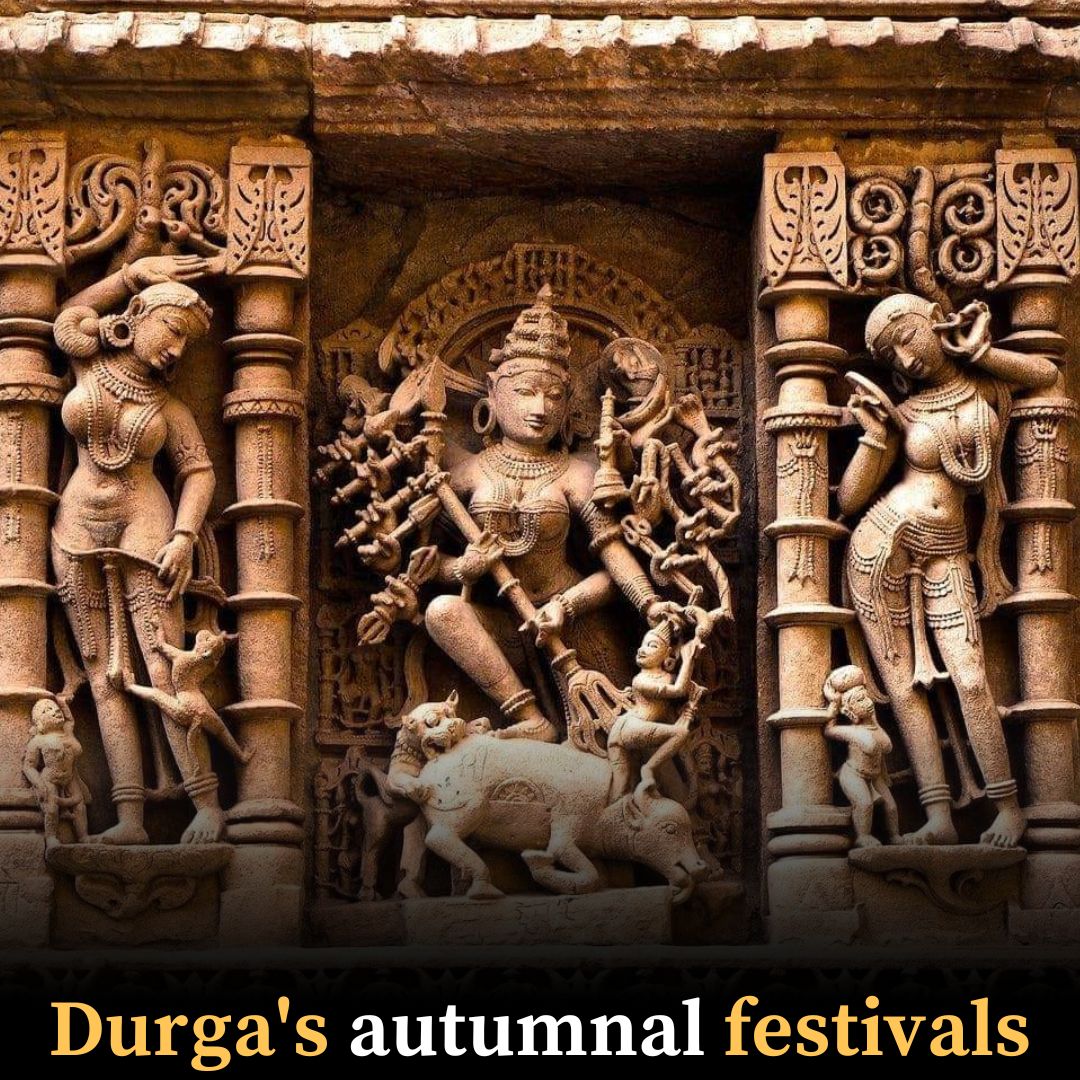This month, Hindus across the globe kick off the Hindu Autumn festival season with observances dedicated to Adishakti (feminine cosmic power) in the form of Durga. The embodiment of unconquerable force, the fierce Durga manifests from the combined powers of the Devas as a mighty warrior who vanquishes the Asuras Mahishasura, Shumba-Nishumba, Chand-Munda etc. Hinduism remains one of the last major spiritual traditions on earth where the divine is acknowledged as having a female form. Far from a being marginal aspect of the tradition, feminine forms such as Durga and Kali, are some of the most popular Hindu deities and are revered as supreme Godhead in Shaktism; one of the major denominations of contemporary Hinduism.
In Autumn, Durga is worshipped over 9 days (Navaratri), 5 days (Durga Puja) or 16 days (Sodash Dinatmak Puja) across different regions of Bharat. Though they commence on different days, these observances all culminate on the day of Dusshera. During this period, the presence of Durga descends on earth and pujas, homes, sacrifices, fasts, sacred dances and other practices are performed to secure her blessings of courage, strength and power.
About the image: Durga vanquishing Mahishasura: sculpture from walls of the Rani-ki-vav stepwell in Patan (Gujarat). It was constructed by the Chalukya Queen Udayamati in the 11th century, as a facility to store water. Across ancient India,step-wells were created with intricate carvings and embedded with shrines; reflecting the Hindu reverence for water. Rani-ki-vav (a UNESCO World Heritage site) is one of the most intricate and resembles a temple complex.

